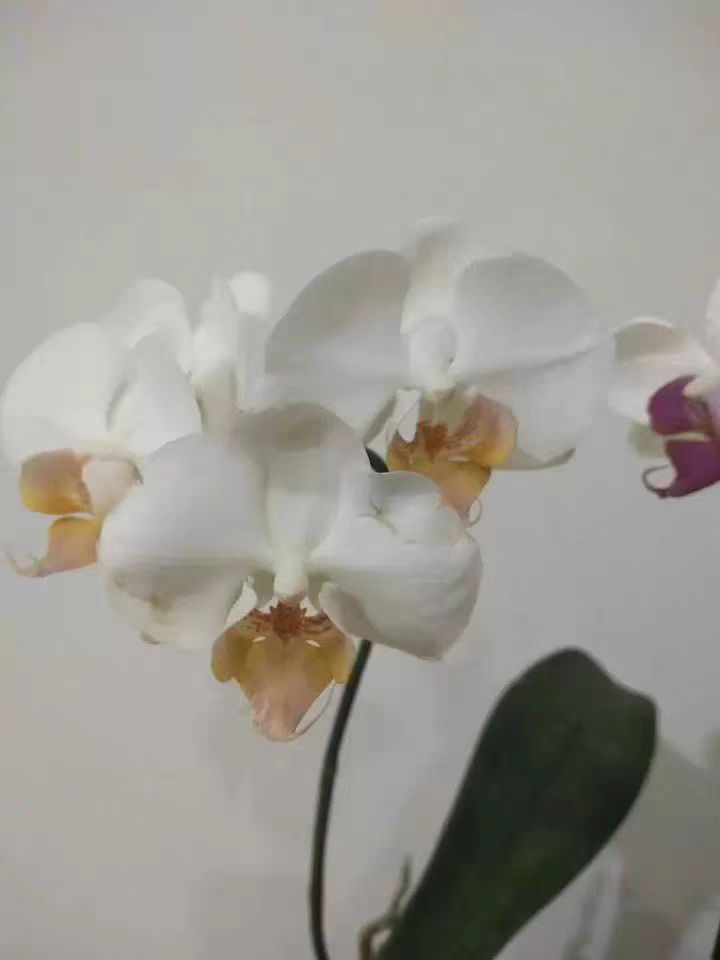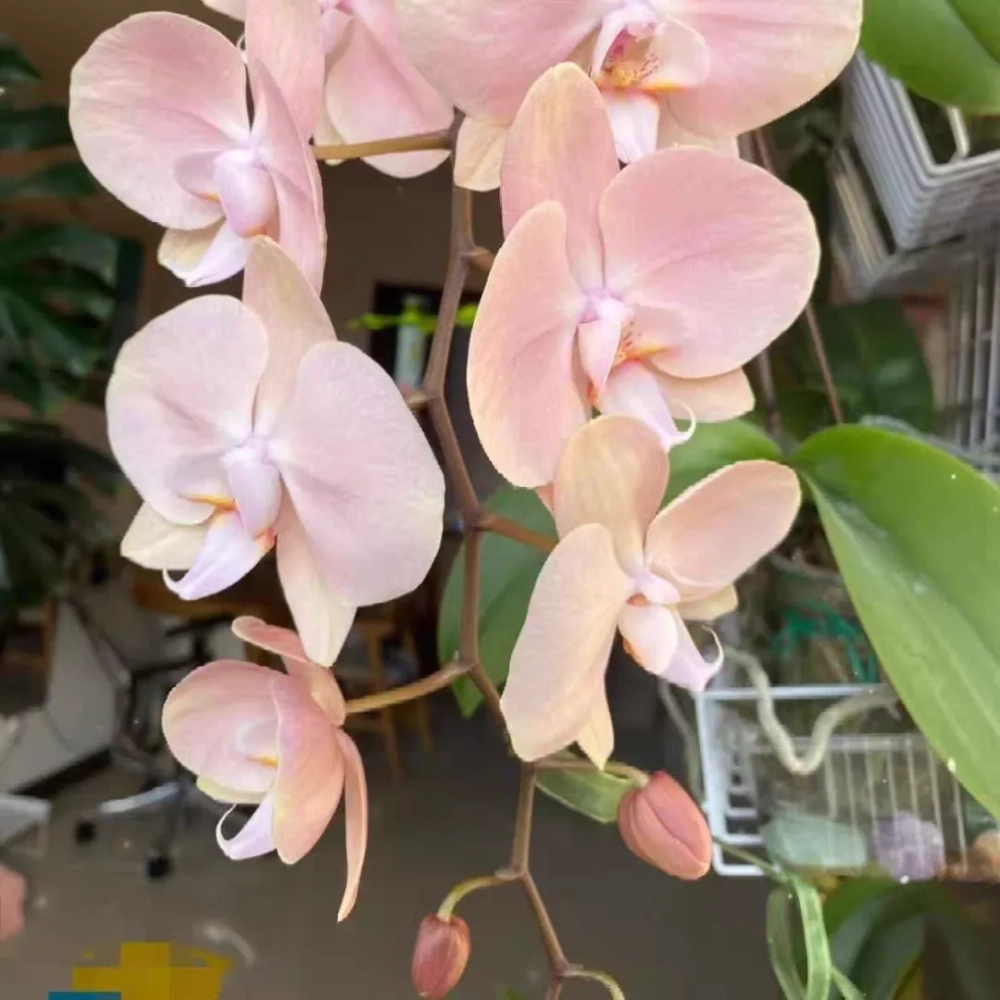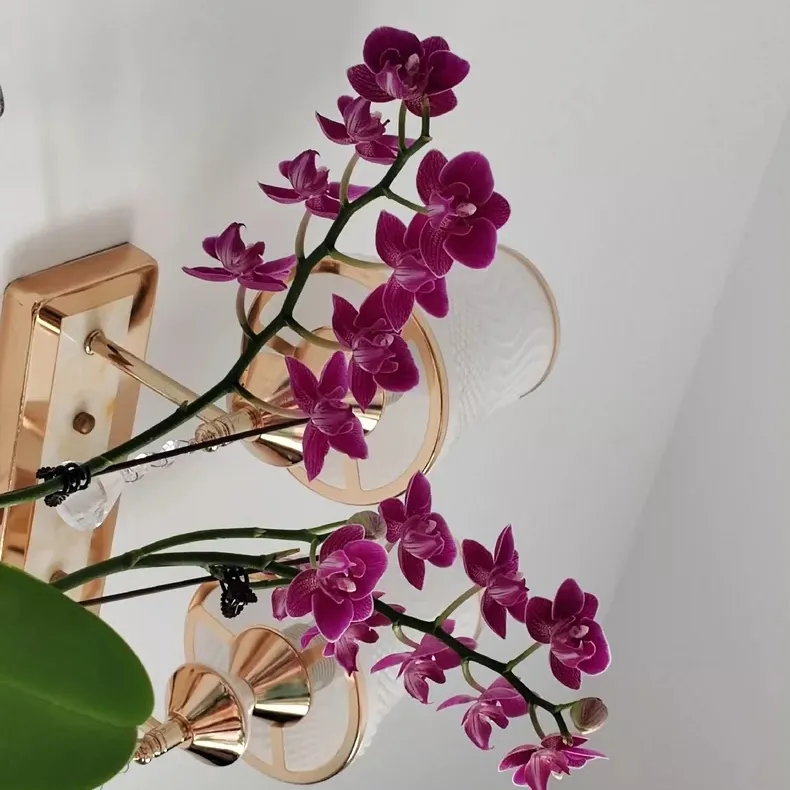Phalaenopsis orchids are as elegant and lively as butterflies. Many people are curious about whether this beautiful flower can be placed outdoors and whether it is afraid of rain. If you choose to cultivate it outdoors, what methods should you follow?
Phalaenopsis orchids are native to subtropical rainforest areas, which determines their "delicate" habits. Essentially, Phalaenopsis orchids are not suitable for being placed outdoors for a long time, and they are rather afraid of rain.
The roots of Phalaenopsis orchids are aerial roots, which are very sensitive to moisture and air circulation. The pH of rainwater is unstable, and it may contain impurities and acidic substances. When raindrops fall on the leaves and flowers of Phalaenopsis orchids, if they cannot dry in a timely manner, it is very easy to cause diseases. For example, water accumulation in the center of the leaves will quickly breed bacteria in a high - temperature and high - humidity environment, leading to soft rot, which will gradually rot the leaves and seriously affect the health of the plant. Moreover, the impact of heavy rain may damage the delicate flowers and leaves of Phalaenopsis orchids, destroying their beauty and reducing their ornamental value.
If you want to cultivate Phalaenopsis orchids outdoors, you need to plan and care for them carefully. In terms of site selection, choose a place that can protect from wind and rain and has good scattered light. For example, you can place Phalaenopsis orchids under the eaves or next to a flower stand with a sun - shading net to ensure that it is not directly exposed to the sun and not washed by rain.
In terms of watering, Phalaenopsis orchids cultivated outdoors cannot completely rely on rainwater. Because even on non - rainy days, the water evaporation in the outdoor environment is different from that in the indoor environment. Generally speaking, when the surface of the cultivation substrate becomes dry, it is necessary to water. It is best to choose to water in the morning so that the plant has enough time to evaporate the excess water during the day and avoid water accumulation at night. When watering, slowly water until it is thoroughly wet, allowing the water to fully penetrate into the substrate, but do not cause water accumulation.
Fertilization is also a key link in the outdoor cultivation of Phalaenopsis orchids. Due to the fact that nutrients are easily lost with rainwater in the outdoor environment, the fertilization frequency should be appropriately increased. During the growth - thriving period, a thin liquid fertilizer can be applied every 1 - 2 weeks, mainly nitrogen - based fertilizer, to promote the growth of branches and leaves; before the flowering period, the proportion of phosphorus - potassium fertilizer should be increased, such as potassium dihydrogen phosphate. After dilution, it is sprayed on the leaves or watered into the roots once every 10 days or so, which can promote flower - bud differentiation and make the flowers more plump and beautiful.
The prevention and control of diseases and pests cannot be ignored. In the outdoor environment, Phalaenopsis orchids are more vulnerable to the invasion of diseases and pests. Regularly check the plants, and once there are signs of diseases and pests, take timely measures. For common aphids and spider mites, pesticides such as imidacloprid and pyridaben can be used for spraying control; for diseases such as anthracnose and soft rot, the diseased leaves should be cut off in a timely manner, and fungicides such as carbendazim and chlorothalonil should be sprayed.
Although Phalaenopsis orchids can be cultivated outdoors, attention should be paid to the management of light, water, temperature, and fertilization. In the high - temperature and strong - light environment in summer, shade - protection and cooling work should be done well; in winter, warmth - preservation and moisture - preservation work should be done. At the same time, regular fertilization and the prevention and control of diseases and pests are also the keys to ensuring the healthy growth of Phalaenopsis orchids.
Can Phalaenopsis orchids be placed outdoors? Are they afraid of rain?

Share with
Tagged in :




Leave a Reply